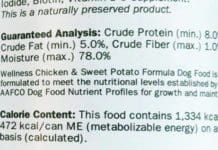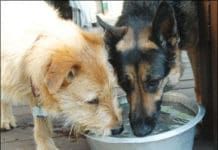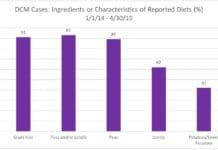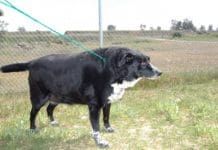Home Search
raw dog food - search results
If you're not happy with the results, please do another search
Help Manage Your Dog’s Diabetes Through Proper Diet
There is no single “best” diet for dogs with diabetes. Most diabetic dogs do fine on a diet formulated for adult maintenance. And most do not require a high-fiber prescription diet. However, it is important to maintain consistent carbohydrate levels, and a diet moderately low in fat may be safest. The nutritional needs of any concurrent disease should take precedence.Dogs with diabetes can thrive on diets that are dry or canned, prescription, frozen raw, home-prepared (cooked or raw), and combinations of any of these. See the samples below (starting with “Prescription Diets”) for a variety of diets that have worked well for diabetic dogs and their caregivers. We’ll say it again: There is no single “best” diet for dogs with diabetes. Most diabetic dogs do fine on a diet formulated for adult maintenance. And most do not require a high-fiber prescription diet.
Ask For More
Pet food companies don't have to prove that their products contain the minimum amounts of all the nutrients that are considered essential for dogs before labeling and selling their foods as complete and balanced" diets. In fact
Choosing The Right Dog Chew For Your Dog
Beef hides and hooves, pig ears and snouts Do you know which of these animal products are good for your dog, and which are dangerous? Walk down the right aisle in any pet supply store and you can't miss them: row upon row, bin upon bin of preserved and processed animal parts, all intended for your dog's chewing pleasure. First, there are the rawhide products perhaps the least visually objectionable stuff on display. Most pet stores carry many varieties of rawhide chews, including flat discs, round rolls, twisted and braided chews, and fanciful items such as rawhide footballs and food bowls.
Helping Your Dog Lose Weight
When Ella, a five-year-old Norwich Terrier, first came to live with me a few months ago, she weighed a svelte 10.8 pounds. But within two months her weight had ballooned by almost a full pound, and there was no way you could call her anything but plump. How could this happen? How could I have let my new dog get fat me, the one who perpetually preaches the benefits of keeping dogs lean? And what the heck was I going to do about it? The answer is that it happened because Id never owned such a small dog before, and it turned out I was massively overfeeding her, particularly when I counted all the treats she was getting. And I would do whatever it takes to get her back to the weight she should be, and keep her there. Here is what I learned during my struggle to help Ella lose weight.
Determining Your Dog’s Health Through His Feces
You can learn a lot about your dogs’ health from their poop. Its color, consistency, contents, odor, amount, and frequency can give you valuable, up-to-date information about their health. For example, it can provide early warning that your dog’s diet may be unsuitable, or that she may be grappling with parasites, viruses, unfriendly bacteria, bad water, emotional upset, food allergies, or serious illness.
Exocrine Pancreatic Insufficiency in Dogs
Kanis Fitzhugh, a member of the Almost Home organization, knew she had to rescue Pandy, an extremely thin and seemingly vicious four-year-old Dachshund. Pandy had been relinquished to a shelter in Orange County (California), who turned her over to Southern California Dachshund Rescue. Deemed people- and animal-aggressive, Pandy appeared to have been starved, and weighed just 13 pounds. Fitzhugh thought the dog deserved a break, and brought Pandy home in May 2007. During the first couple of weeks in her new home, Pandy managed to pull a chicken down from the counter and proceeded to eat the entire bird, including bones, plastic tray, and grocery bag, in less than the 10 minutes that Fitzhugh was out of the room. Pandy was rushed to the vet and emergency surgery was performed, as the bones had ruptured her stomach lining in three places. Luckily, she survived. Pandy's voracious appetite, large voluminous stools, and aggressive disposition were all caused by a medical condition called exocrine pancreatic insufficiency (EPI). With Fitzhugh's loving care, including enzyme supplements and a change of diet, Pandy stabilized. Within a year, Pandy had transformed into a beautiful, funny, 26-pound Dachshund who gets along great with all the human and animal members in the Fitzhugh household. Exocrine Pancreatic Insufficiency, or EPI, also referred to as Pancreatic Hypoplasia or Pancreatic Acinar Atrophy (PAA), is a disease of maldigestion and malabsorption, which when left untreated eventually leads to starvation. One of the major difficulties with this disease is in the prompt and accurate diagnosis. Astonishingly, visible symptoms may not appear until 80 to 95 percent of the pancreas has atrophied.
The Benefits of Apple Cider Vinegar to Dogs
People have been using vinegar for thousands of years, and while most of it goes into salads and condiments, vinegar can be used as a household cleanser, cosmetic aid, and health treatment. Many dog lovers add vinegar to their pets' food or apply it topically to their best friends. Advocates call vinegar, especially unpasteurized organic apple cider vinegar, a wonder food. Is vinegar really a health-improving supplement, a natural preservative, a nontoxic cleaning product, a disinfectant, a source of important nutrients, and an effective topical treatment for canine ailments?
Ten Safe Feeding Tips for Dog Owners
We recommend that dog owners switch foods frequently. Many food makers suggest switching foods slowly, by replacing a small amount of the dog's old food with a new food and slowly increasing the percentage of new food over a week or two. If you feed more than one type of food per day to your dog, and switch frequently, you will likely find that these slow switch" schedules are completely unnecessary. Why? Because dogs who eat a varied diet are already accustomed to a variety of foods; their bodies are already making a nice mélange of digestive enzymes that support the sort of mixed population of microbes needed to break down all sorts of foods. It's only when you have been feeding only one type of food for a long time that you need to be so slow in introducing a new type of food."
Preventing Bladder and Kidney Stones in Dogs
Bladder and kidney stones are serious problems in dogs as well as people. These conditions which are also known as uroliths or urinary calculi can be excruciatingly painful as well as potentially fatal. Fortunately, informed caregivers can do much to prevent the formation of stones and in some cases actually help treat stones that develop. Last month, we described struvite stones (see Canine Kidney Stone and Bladder Stone Prevention" Whole Dog Journal April 2010). Struvites contain magnesium
Update on grain-free diets and DCM cases in dogs
On June 27, 2019, the United States Food and Drug Administration (FDA) released an update to two previous advisories regarding dog food and dogs...
The Dog is Throwing Up!: Your Guide to Dog Vomiting
When dogs feel nauseated and are about to throw up, they often drool, lick their lips, swallow excessively, and stand head down looking worried. Many dogs look for or turn to their owners when they're about to vomit, which can signal alert caregivers to move their pets to a better location! In time you might be able to train your dog to throw up where it does the least damage.
Canine Pancreatitis
Pancreatitis literally means inflammation of the pancreas, the glandular organ that secretes enzymes needed to digest food. When something causes these enzymes to be activated prematurely, they can actually begin to digest the pancreas itself, resulting in pain and inflammation. Pancreatitis occurs in two different forms, acute and chronic, and both may be either mild or severe. Acute pancreatitis occurs suddenly and is more often severe, while chronic pancreatitis refers to an ongoing inflammation that is usually less severe and may even be subclinical (no recognizable symptoms). Acute pancreatitis can be extremely painful, and can become life-threatening if the inflammation spreads, affecting multiple organs and systems. Symptoms commonly include anorexia (loss of appetite), vomiting, weakness, depression, and abdominal pain. Abdominal pain in a dog may be exhibited as restlessness or not wanting to move; a hunched appearance or a praying position, with the chest down and the rear raised; or vocalization (crying or whimpering). Additional symptoms may include diarrhea, drooling, fever, and collapse.












